Fish Farms: A Solution or A Problem
Rise of Aquaculture
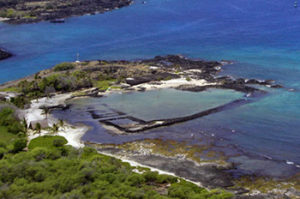 Anyone who has raised fish in an aquarium will look at this idea and think this has to be an answer to save stocks of preferred seafood as well as provide for the appetite of seafood lovers throughout the world. Today seafood that is raised includes fish, shrimp, oysters, seaweed, mussels, and other almost anything that grows in the ocean, streams, rivers, or lakes.
Anyone who has raised fish in an aquarium will look at this idea and think this has to be an answer to save stocks of preferred seafood as well as provide for the appetite of seafood lovers throughout the world. Today seafood that is raised includes fish, shrimp, oysters, seaweed, mussels, and other almost anything that grows in the ocean, streams, rivers, or lakes.
The first fish farms were probably accidental. Floods that would bring in fish allow them to be trapped into lakes, and these fish then could be fed and preserved to eat throughout the year. Evidence of this has been seen in Australia with eels (almost 6,000 years ago), China with carp, and Hawaiians with mullet.
The Hawaiians had nearly 500 artificial fishponds that were lost over 100 years because of neglect or abandonment. These were shallow areas by reefs that were surrounded by a rock wall allowing the sea to come in but the fish could not get out. Some attempts have been made to restore these fish pond areas.
Advantages to aquaculture are the ability to have a sustainable catch of fish without the difficulty of fishing itself. Ocean fishing is difficult work, and dangerous. In order to make up for the risk larger ships have been used with longer nets, and increasingly stripping the world of fish species. The hazards of working with heavy equipment in the ocean can be seen when watching “Deadliest Catch.”
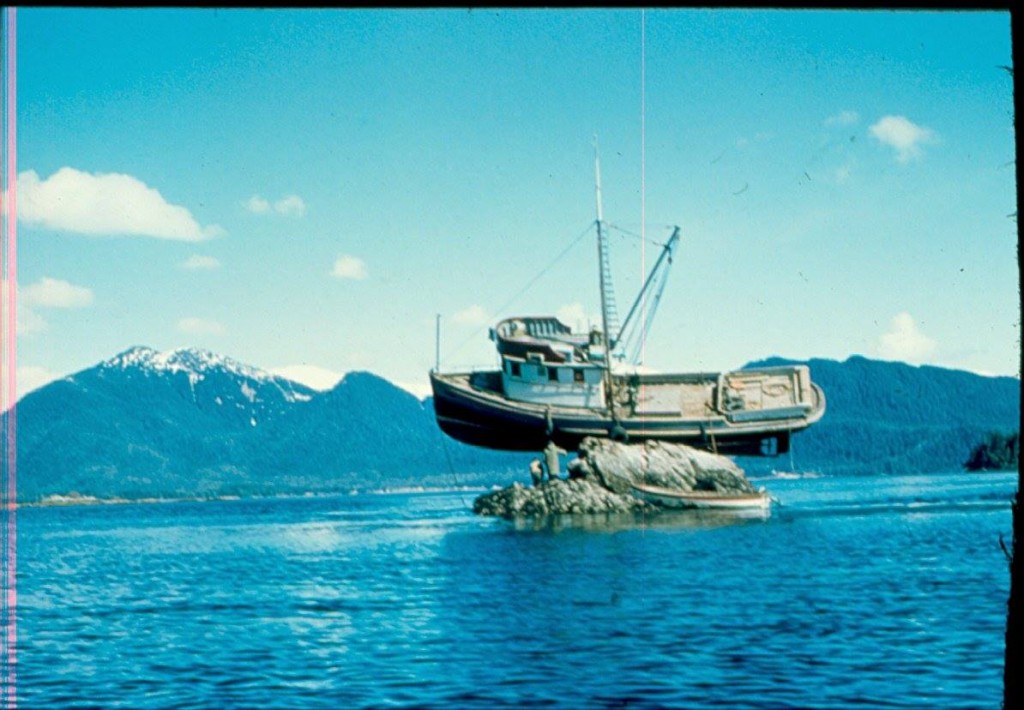
The dangers of fishing include costly boats that can be lost with bad weather or navigation
The oceans have been treated like a strip mining site. As native fish stocks have been over fished, the demand for those seafood continues to rise.
The environmental damage caused by ocean fishing includes bycatch, or inadvertent catching of juvenile fish that have yet to mature and mate. Included in those large ocean nets are found endangered species, turtles, dolphins, and those creatures die needlessly, and that waste has partially led to the rise of aquaculture.
Today over ninety percent of the salmon sold in the United States is farmed salmon. The majority of catfish, tilapia, rainbow trout, and arctic char are all farm raised. Over 90 per cent of the shrimp consumed is farmed, and some imported. Even Arizona, land-locked, provides both tilapia and shrimp.
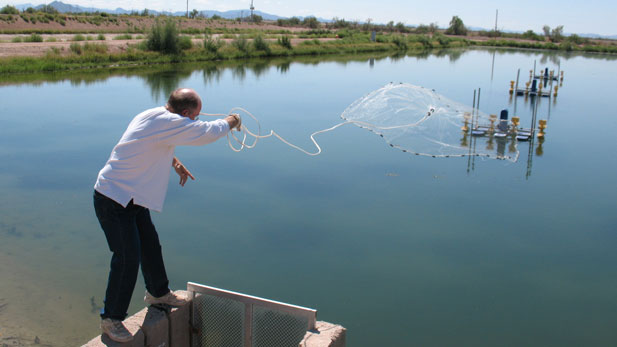
In Gila Bend, the middle of the desert, shrimp is farmed in an old rock quarry. They have eliminated the issue of contaminated ocean water in their growing cycle.
Advantages of Aquaculture
Similar to agriculture, the ability to raise a product under controlled conditions, to a uniform size is almost irresistible. Fish can be bred, or selected similar to domesticated land animals, for size, rapid growth, and growth of the parts that are most desirable. Farmed fish can be harvested throughout the year, based on demand, and not based on a fishing season.
Certain farmed seafood such as filter feeders, like clams, oysters, and mussels, filter the water they are in feeding on microorganisms in the water. These filter feeders increase the water quality they are farmed in.
The domestication of fish and other seafood’s safer than domestication of land animals. The origin of smallpox, diphtheria, tetanus, typhoid, and influenza move from human hosts to animal hosts with ease. There are no pathogens that have crossed from the waters to humans with infectious diseases causing epidemics or pandemics. The evolutionary divergence is too wide for that bridge to be crossed.
For those concerned with fish pain the farming of fish avoids prolonged suffering from being caught, drowned, and prodded. It should be pointed out that as a sentient being, fish do not have the nervous capacity to no fear, only avoidance. The fish do not have a neocortex of their brain, in order to process what pain is. Suffering is a higher conscious level of thinking- a human can consider pain, be worried about it, and feel pain in anticipation of pain, but a fish cannot.
Aquaculture Concerns: Myths and Facts
The concerns with aquaculture are similar to those with agriculture: pollution, the use of genetically modified organisms, over use of feedings, and the potential increase in toxic chemicals combined with a question of whether the farmed seafood will have the same health benefits as the wild seafood. In this case we will examine the Atlantic salmon farms in British Columbia as our example.
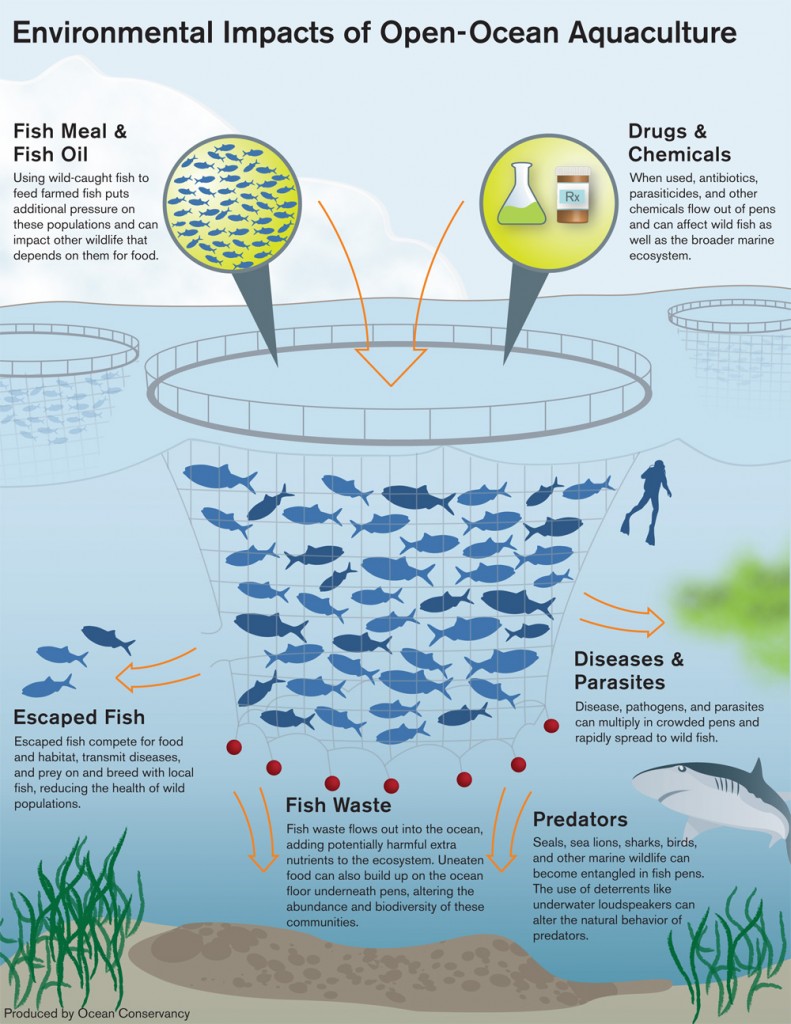
In British Columbia the salmon farms raise a variant of Atlantic Salmon (Salmo salar) in open net cages in the ocean. The dangers that these farm salmon would escape and would compete with Native British Columbia salmon is minimal. When looking for Atlantic Salmon in British Columbia streams, they found 144 fish tentatively identified as Atlantic salmon in the BC rivers. British Columbia tried to introduce Atlantic Salmon to the Pacific Northwest between 1905 and 1935. Over 8 million salmon fry were introduced to more than sixty lakes and streams, but no self-sustaining population developed. The likelihood of Atlantic Salmon being able to out-compete local Pacific salmon is low.
Pollution from the large biomass of fish, including fish waste could have a significant impact on the ocean floor. Salmon farms are only allowed near deep water where the organic waste has minimal impact on the ocean floor. The sea floors are monitored by the provincial government and if there is too much impact then the farm is prohibited from stocking fish in the area. The fallacy with this argument is that stocks of wild salmon, with their large biomass, have an effect on local environments also. Salmon poop, be it from wild or farmed salmon is still – salmon poop – and a large school of King salmon running in season provides a huge impact.
Sea lice can proliferate in pens of farmed salmon and spread to surrounding native fish. Sea lice are fatal to juvenile salmon as they leave fresh water and head to the ocean. Sea lice are monitored weekly by aquatic veterinarians. If the lice level is high or close to when native fry are coming to fruition they are given an antibiotic that does not affect humans. Over 98 percent of the feed given fish are free of this antibiotic.
British Columbia fish farms represent a positive mechanism to provide year-round salmon in a responsible manner to the table. This is not an easy admission for an Alaskan, but farmed salmon from British Columbia should be ranked as a Good Choice for seafood lovers.
Aquaculture Solutions
Closed Containment systems provide a barrier between the farmed fish and Native species. This minimizes the impact on the environment by providing safer water, avoiding escaped fish, processing waste without simply polluting the shores, and keeping predators away from the area. Because the water is cleaned there is less need for antibiotics, or other substances that can find their way into the food. These still have an environmental impact from the large biomass.
Other projects, such as the Velella Project in Hawaii, provide an unanchored drifter pen that rides eddies in open ocean 3-75 miles off the Big Island of Hawaii. The pen is submersible over the surface of the ocean, away from reefs and corals. The fish were stocked with fingerlings of a Native species. The fish were fed with a sustainable diet of fishmeal and oil and soy, no antibiotics, hormones or pesticides. There was minimal impact on the marine environment, while they raised the sashimi-grade kampachi (tropical yellowtail).
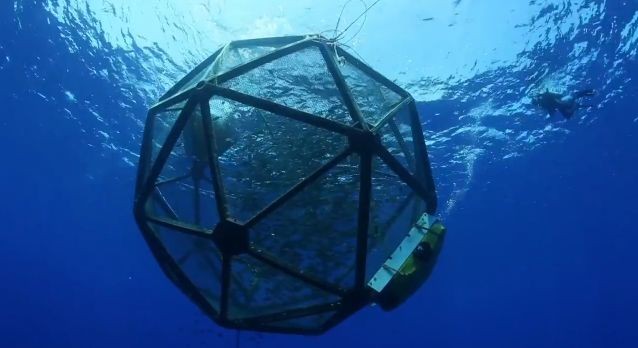
The fish farm is raised in the ocean, freely floating, with minimal impact on the local environment
The Velella Project uses the natural ecosystem to supplement the school of fish that it is raising to provide a balance. Other aquaculture systems become sustainable when multiple species are raised in close proximity, that mimics the food pyramid. This is called “integrated multi-tropic aquaculture.” In these systems the sustainability and environmental damage is decreased because they mimic nature’s cycle. Fish are fed but below them are feeders like lobsters, sea cucumbers, and urchins that obtain the excess fish food. Mussels and other shellfish are downstream from the fish to provide filtering and recycle the organic nutrients. Seaweed downstream from that absorbs and captures the inorganic waste and produce oxygen.
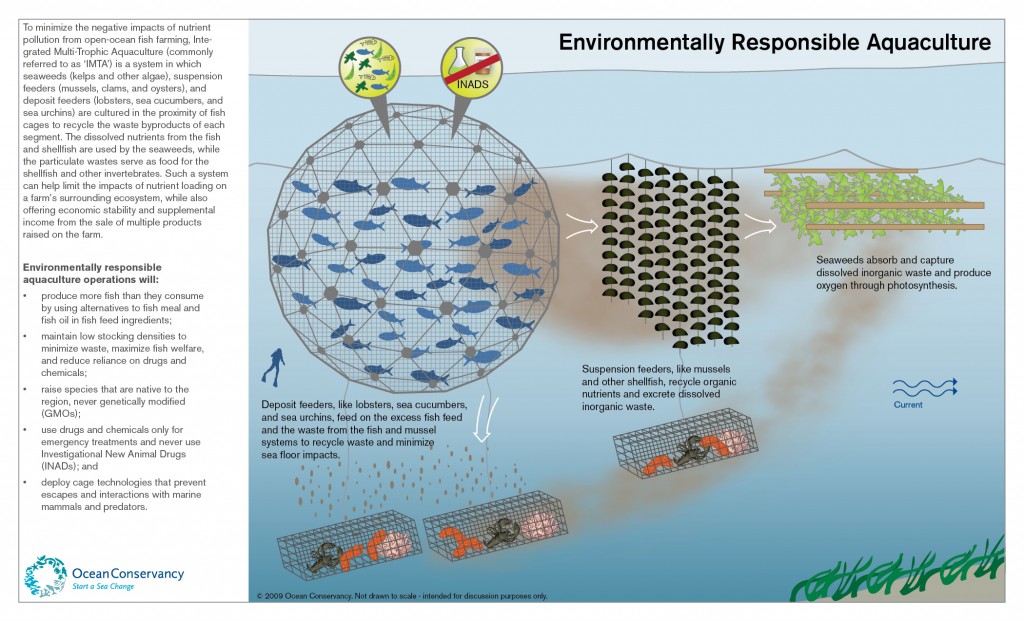
Courtesy of Ocean’s Conservatory
